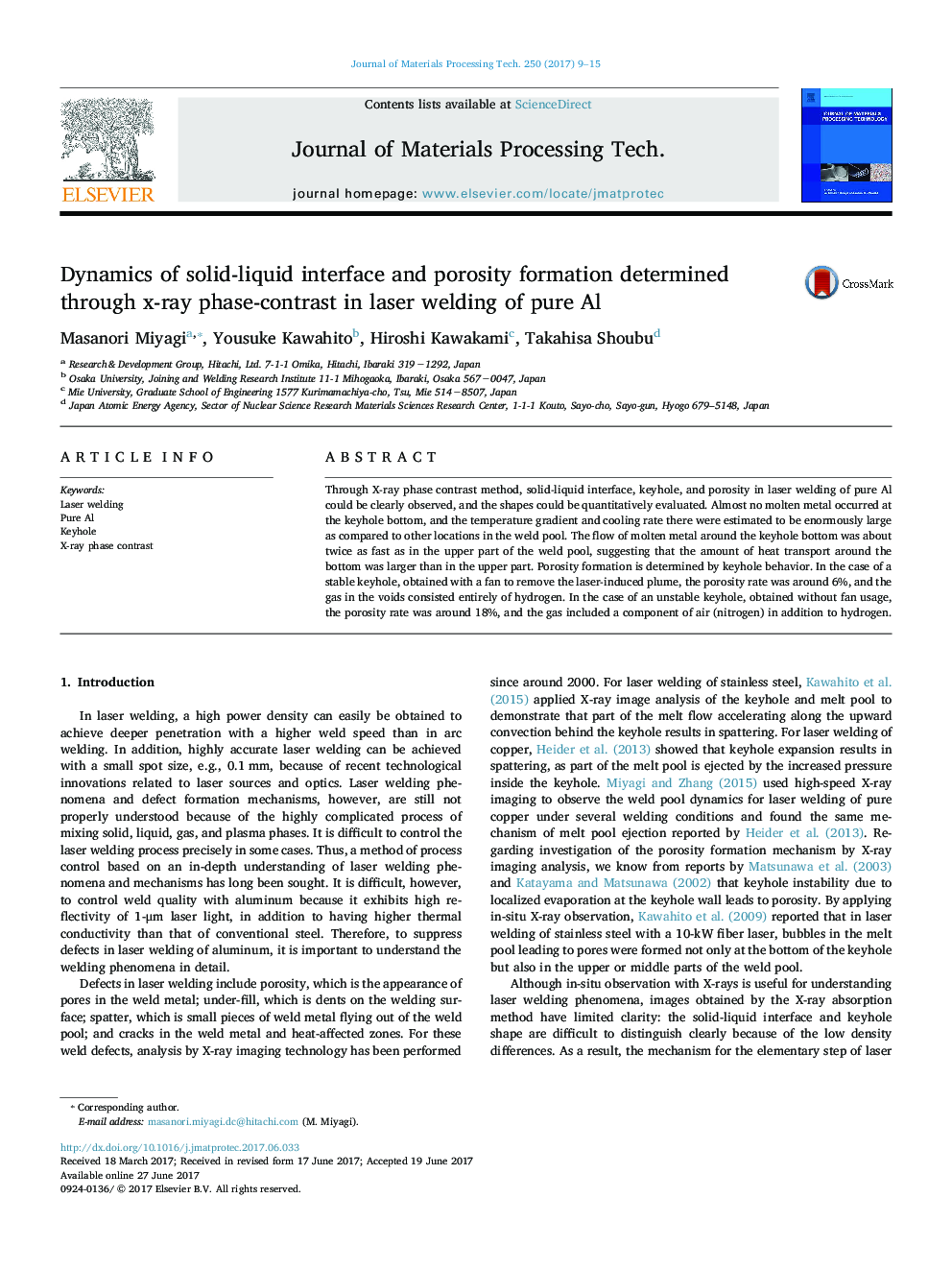| Article ID | Journal | Published Year | Pages | File Type |
|---|---|---|---|---|
| 5017659 | Journal of Materials Processing Technology | 2017 | 7 Pages |
Abstract
Through X-ray phase contrast method, solid-liquid interface, keyhole, and porosity in laser welding of pure Al could be clearly observed, and the shapes could be quantitatively evaluated. Almost no molten metal occurred at the keyhole bottom, and the temperature gradient and cooling rate there were estimated to be enormously large as compared to other locations in the weld pool. The flow of molten metal around the keyhole bottom was about twice as fast as in the upper part of the weld pool, suggesting that the amount of heat transport around the bottom was larger than in the upper part. Porosity formation is determined by keyhole behavior. In the case of a stable keyhole, obtained with a fan to remove the laser-induced plume, the porosity rate was around 6%, and the gas in the voids consisted entirely of hydrogen. In the case of an unstable keyhole, obtained without fan usage, the porosity rate was around 18%, and the gas included a component of air (nitrogen) in addition to hydrogen.
Related Topics
Physical Sciences and Engineering
Engineering
Industrial and Manufacturing Engineering
Authors
Masanori Miyagi, Yousuke Kawahito, Hiroshi Kawakami, Takahisa Shoubu,
